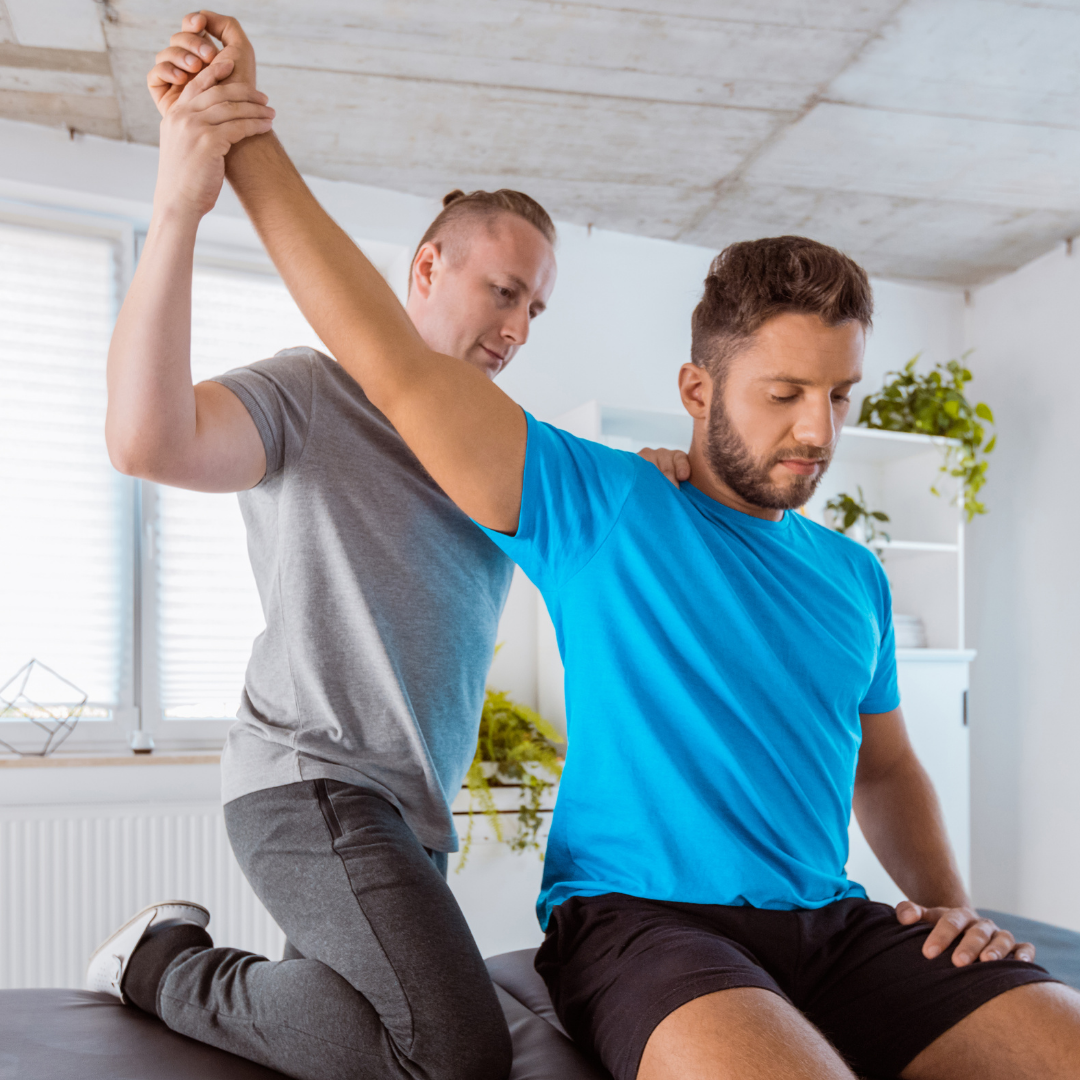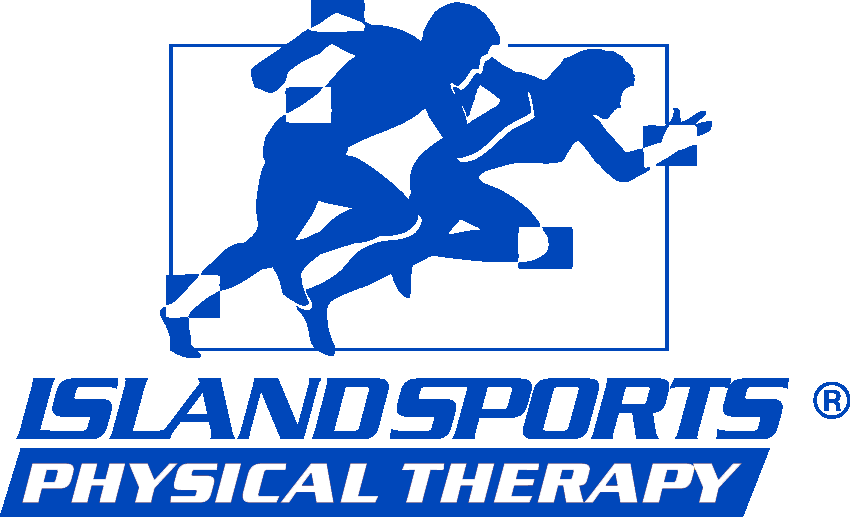
The Best Foods To Stay In Peak Physical Health
Nutrition directly affects your physical performance, whether you’re a weekend warrior, elite athlete, or simply trying to exercise more. Your body does a lot throughout the day, so having a comprehensive diet plan that matches these demands is essential for optimal performance. In honor of National Nutrition Month, our team at Island Sports Physical Therapy would like to discuss some of the best foods you should eat to stay in peak physical health. These tips follow USDA guidelines for proper nutrition. Every individual’s nutrient and caloric needs will vary. Please consult with a nutritionist or medical professional to determine what is best for your health.
Nutrition And Physical Health
The more demand you place on your body, the more attention you’ll need to take on what you’re fueling it with. If you do not eat a balanced and nutritious diet, you may not perform at your best. For example, failing to load up on carbohydrates before a strenuous workout or endurance event can cause your body to burn fat as a substitute for fueling your energy. You may even start burning protein, which deprives your muscles of strength. No matter what your physical goals are, lifestyle changes can help tremendously.
Nutrients In Your Diet
Your body requires a consistent mix of nutrients to function at its best. The two primary categories for nutrients include micronutrients and macronutrients. Micronutrients consist of vitamins and minerals. Some micronutrients help regulate the actions of each other, while others are beneficial in trace amounts. Many athletes gravitate toward B-complex vitamins since they help increase energy, but fueling your body with a healthy mix of vitamins C, A, E, and K will keep you functioning at your best.
Macronutrients include proteins, fats, carbohydrates, fiber, and water. Carbohydrates, protein, and fats help your body create energy. Carbohydrates burn first and are beneficial for endurance training. Protein helps strengthen your muscles, including the heart. Fats are stored in your body as a reserve fuel supply but serve several vital duties in the body. Fats can help manage inflammation, lubricate your joints, promote brain health, and produce hormones. If you are dealing with pain and inflammation, dietary changes combined with therapeutic exercises can help reduce your symptoms
Planning Healthy Meals
Eating a balanced diet can help you get the nutrients you need to fuel your everyday activities. When it comes to choosing proper foods to boost your performance, choosing vegetables over sweets is not enough. You’ll need to eat the right foods at the right times of day to stay in peak physical health. Without calories from the healthiest food sources, you may struggle to achieve your performance goals. Plan a nutritious meal by choosing one or more of these foods from each of these categories:
Carbohydrates
- Oatmeal
- Fruit
- Whole Grains.
- Quinoa
- Starchy Vegetables
- Non-Starchy Vegetables
- Brown Rice
Healthy Fat
- Nuts and Seeds
- Olive Oil
- Peanut Butter
- Avocado
- Coconut Oil
Protein
- Poultry
- Lean Red Meat
- Fish
- Greek Yogurt
- Whole Eggs
- String Cheese
- Hummus
- Milk
Your nutritional needs will largely depend on your schedule and exercise level. Being mindful of what you’re asking your body to do will help you determine the type of fuel you need. To perform at your peak all season long, you’ll need the right fuel.
Contact Us
Our experts at Island Sports Physical Therapy understand the importance nutrition has on your physical health. If you have questions or concerns about your workout performance, be sure to contact our office today to schedule an appointment and get started on your journey toward peak physical health!


Benefits Of Our Fitness Programs For Heart Health
Maintaining an active lifestyle is one of the most important steps toward good heart health. If you are new to exercise and aren’t sure what to implement into your routine, achieving your goals can be more challenging. February is American Heart Month, and our team at Island Sports Physical Therapy would like to discuss some of the benefits of our fitness programs for heart health! Continue reading to learn more!
Our Fitness Programs
At Island Sports Physical Therapy, we possess several unique tools for evaluating your physical capabilities. Our personalized fitness programs allow us to teach you heart-healthy exercises you can perform at home or with our state-of-the-art fitness equipment. Our team will evaluate your current fitness abilities and cardiac disease risk factors to outline an appropriate treatment program that sets you up for success.
Benefits of Fitness For Heart Health
It’s no secret that staying active is incredibly beneficial and vital to your heart health. Understanding the numerous heart health benefits of physical activity can be your motivation to get started with our fitness programs. Here’s what you need to know:
- Lowers blood pressure – Exercise helps lower your blood pressure at rest and when exercising. High blood pressure is one of the leading risk factors for heart disease.
- Weight control – When combined with a smart diet, exercise is a critical component for sustained weight loss. A healthy weight optimizes your heart health since obesity puts stress on the heart and is a risk factor for heart disease and stroke.
- Lowers stress – Stress places a heavy burden on the heart. Exercise releases endorphins and helps you relax and ease stress.
- Slows development of diabetes – Aerobic exercises and strength training can significantly reduce your risk of developing diabetes. Exercise allows the muscles to process glycogen better. When glycogen is impaired, it can lead to high blood sugar levels and diabetes.
- Reduces inflammation – Chronic inflammation can be reduced with regular exercise as the body adapts to the new challenges on various bodily systems. This can help reduce the adverse effects of other conditions.
Getting Started
Getting started and staying on track of your fitness goals requires commitment. If you are unsure of where to start, our team will help you find the right exercise program for your unique capabilities. Aside from our fitness programs, here are some tips for incorporating physical activity into your lifestyle and reaping the benefits outside of our office:
- Make it part of your routine – You don’t need to become a track star to experience all of the benefits of activity. Start your journey by doing activities you enjoy and make them a part of your routine. It’s essential to start small and gradually build. Walking is a fantastic low-impact exercise that you can slowly increase over time. Walking helps get your blood pumping and can significantly improve your heart health.
- Personalization – Some want to be active because they enjoy recreational activities or sleep better. Others want to exercise for weight loss. Regular exercise serves as an insurance policy that offers both short and long-term protection for your heart. Identify the benefits you value to help you stay on top of your goals.
- Involve friends and family – Your loved ones can help you stay active. When it comes to getting active with friends or family, the possibilities are endless. Go on a hike, take dance lessons, or play catch outside with your children.
- Make routine tasks more active – You can make simple parts of your routine more active. Try taking the stairs instead of the elevator, or park farther away in a parking lot to get more walking in.
- Track your progress – Keep a log of your activity to track your development. A step counter on your watch is a great tool to help you set goals and stay motivated.
Contact Us
This year during American Heart Month, protect your heart health and consult with our team at Island Sports Physical Therapy. We’ll help you define a routine that works for your lifestyle and help mitigate your risk of developing a heart condition. Contact us today to schedule an appointment for care and learn more about our fitness programs!


When Do You Need Spinal Rehabilitation?
At Island Sports Physical Therapy, we have treated patients dealing with several different spinal conditions and diseases. If your back pain or injury has hindered your mobility and kept you from performing your daily routine, you should not hesitate to seek care. Continue reading to discover if your condition may benefit from spinal rehabilitation.
Spinal Rehabilitation
Injuries to the back and spine are among the most debilitating orthopedic injuries we treat at Island Sports Physical Therapy. Spinal rehabilitation is critical, whether you’re living with a painful condition or recovering from surgery. Spinal rehabilitation guides patients’ physical, social, and psychological recovery when dealing with spinal diseases or injuries. Rehabilitation can help you regain functionality and prevent future complications from your injury. Our goal with spinal rehabilitation is to help patients achieve the following:
- Improved mobility and functionality – Scar tissue can build up and limit your mobility if you’ve undergone spine surgery. Spinal rehabilitation can help you avoid painful scar tissue buildup and increase flexibility and function in the recovering area.
- Strengthened supportive muscles – Spinal rehabilitation helps increase functional strength and enables you to avoid recurring injuries. Targeted exercises will help restore spine strength and protect you down the road.
- Improved ability to perform daily activities – Pain and immobility can hold you back from performing necessary daily tasks. Our team will help you regain confidence and increase your everyday functionality. Rehabilitation can help improve your self-management skills and minimize your risk of injury recurrence.
Our dedicated physical therapists focus on difficulties with mobility and lower extremity function. Every patient and spinal injury is different, so we personalize treatment plans to ensure they do not aggravate your condition. We utilize a hands-on approach to care to help you achieve the best possible results. Spinal rehabilitation therapy may involve active and passive treatments.
Passive Therapy
- Ice and Heat Therapy – Ice treatments are applied to the injured area to reduce swelling and inflammation, and heat is applied after to increase circulation. Proper blood flow is essential for waste removal and the transportation of nutrients.
- Manual Therapy – This hands-on approach involves restoring range of motion and mobility to stiff joints and alleviating pain.
- Ultrasound – This non-invasive approach transmits ultrasound waves into the deep, underlying tissues to manage back and neck pain.
Active Therapy
- Therapeutic Exercise – These programs are a cornerstone of spinal rehabilitation that we will personalize to suit your needs. Patients can experience improved stiffness, flexibility, strength, balance, and coordination.
Therapeutic exercises can augment treatments for the spine, especially when combined with other modalities. Our team will thoroughly evaluate your condition and discuss your specific goals to conceive the most effective solution.
When Do You Need Spinal Rehabilitation?
It can be overwhelming to navigate your life with debilitating spine pain or injuries. While rehabilitation after an injury can be a long and tumultuous journey, our team of physical therapists will help you every step of the way. No matter what caused your spinal pain, our team can provide you with various treatment options to address your unique needs. If you are dealing with any of the following spinal injuries or conditions, you may need spinal rehabilitation:
- Whiplash.
- Degenerative Disc Disease.
- Lower Back or Neck Pain.
- Post-Operative Pain.
Contact Us
Pain related to the spine is one of the most complex problems in healthcare. Spinal rehabilitation joins all aspects of recovery to achieve therapeutic success. At Island Sports Physical Therapy, our team focuses on helping you achieve maximum wellness and independence. If you are dealing with debilitating spinal pain or injury, you should consider spinal rehabilitation. For more information on our programs or to schedule an appointment for care, be sure to contact us today!


Staying In Shape During The Holidays
Staying in shape at any point of the year can be a challenge, but it is even more challenging during the holidays. It can seem impossible to squeeze in a workout between family events, last-minute shopping trips, and holiday decorating. However, staying active and in shape during the holidays is essential. If you’re struggling to find the balance between holiday fun and fitness, our team at Island Sports Physical Therapy is here to help! Our dedicated team is here to help you achieve your fitness goals. Continue reading below to learn more about the importance of staying in shape during the holidays.
Staying in Shape During the Holidays
The holiday season is known as the time of year when healthy habits tend to slide off track. With the cold weather keeping us inside and making us sluggish and the endless parade of holiday parties, who wants to trek to the gym? While many individuals who indulge during the holidays can refocus after the season, some struggle to regain the fitness ground they lost or drop the added pounds. It’s essential to incorporate some activity into your holiday schedule. Even if you need to adjust your workout routine, maintaining the momentum of your exercise routine is easier than trying to re-establish it later. Here are some of the reasons why it’s crucial to stay in shape during the holiday season:
- Stress – Managing finances, shopping, decorating, and frequent visitors lead to increased stress. Exercise releases endorphins, which help reduce feelings of stress and improve your mood.
- Holiday Weight Gain – It’s not uncommon to gain a few extra pounds during the holiday with all of the delicious meals to be had. Exercise can help you combat holiday weight gain by burning calories and maintaining muscle mass, which helps sustain your metabolic rate.
- Structure – Maintaining your fitness routine provides structure to your days and having a set routine will help you stay on track and prioritize the season’s demands.
- Seasonal Affective Disorder (SAD) – The winter season chips away at daylight hours. For many individuals, this can lead to varying degrees of seasonal depression. Staying active can help reduce symptoms of SAD and elevate your mood. Exercising outdoors during the day can get your heart pumping and increase your sunlight exposure.
If you fall off track during the season, you shouldn’t give up. At Island Sports Physical Therapy, our team is dedicated to helping you achieve your fitness goals. We’ll help you set up a realistic, holiday-friendly schedule to keep you on track.
Tips for Staying in Shape Over the Holidays
It’s possible to stay healthy and fit over the holidays without missing out on the fun. Stay on track this season with these tips:
- Prioritize fitness – While holiday activities are enjoyable, they can take up a bit of time. This can make running errands even more challenging than before. Prioritize your fitness this season and plan your schedule to fit in workouts.
- Set realistic goals – Setting realistic fitness goals this season will help you stay motivated and give you the confidence you need to accomplish them.
- Find a workout buddy – Finding like-minded individuals to spend time with can be a game-changer. A workout buddy can check in with you, hold you accountable, and motivate you to stay fit.
- Stay hydrated – With so many delicious food and drink options this time of year, it’s easy to fill up on sugary beverages or alcohol instead of water. Staying hydrated will keep your mind and body fresh and energized every day.
Contact Us
A significant component of staying fit involves avoiding stress and relaxing, making the holiday season the perfect time to engage in workouts. It’s essential to prioritize your health this season, but you should still enjoy the activities the holiday season has to offer. At Island Sports Physical Therapy, our team is here to help you find the right balance to maintain your fitness goals and have an enjoyable holiday. Be sure to contact us today to learn more about how we can help!


PT For Diabetic Neuropathy
When you are living with diabetes, you have to pay close attention to your health. Watching your weight, exercising, taking medications, and monitoring your blood sugar are all essential for diabetic patients. In addition, diabetic patients have to be mindful of their lower extremity health to avoid potentially life-threatening complications like diabetic neuropathy. November is National Diabetes Month, making it the perfect time for our team at Island Sports Physical Therapy to discuss some of the benefits of physical therapy for diabetic neuropathy. Continue reading to learn more.
What is Diabetic Neuropathy?
Diabetes can seriously impact the nerves and blood vessels of your feet, so much so that even minor foot problems can lead to significant complications. Most foot problems that diabetic patients face arise from nerve damage and poor circulation. Diabetic neuropathy is nerve damage that can occur when you have diabetes. High blood sugar levels can damage nerves throughout the body, especially those in the legs and feet. This condition can be quite painful and disabling. Some of the symptoms of diabetic neuropathy include:
- Burning or tingling sensation.
- Numbness.
- Loss of sensation or inability to feel pain or temperature changes.
- Sharp pains.
- Increased sensitivity.
- Ulcers, infections, bone, and joint pain.
Any individual with diabetes can develop neuropathy, but certain risk factors can make you more susceptible to nerve damage. Uncontrolled blood sugar, obesity, and smoking can all cause nerve damage. Diabetes is most commonly treated with a combination of exercise, a healthy diet, and medication or insulin. However, through exercise, physical therapy has numerous potential benefits for diabetic patients.
Benefits of Physical Therapy for Diabetic Neuropathy
Physical therapists play a valuable role in helping individuals maintain and improve functions that can become limited by diabetic neuropathy. Our dedicated physical therapists at Island Sports Physical Therapy will work with you to develop an effective treatment plan to address your specific goals and needs. Here are some of the benefits of physical therapy for managing diabetic neuropathy:
- Reduced Fall Risk – Diabetic neuropathy can cause weakness in your lower limbs. Our physical therapy team will work with you to strengthen your core and legs to improve coordination and balance. With increased strength, you are less likely to experience falls, which can negatively impact your health and put your independence at risk.
- Reduced Pain – Exercise releases endorphins, which are the body’s natural painkillers. Aerobic exercises like swimming, walking, or biking are some of the best ways to release endorphins. Physical therapy exercises also increase blood flow to your limbs, keeping the nerves healthy and improving function and feeling in your limbs. Physical therapists can also offer alternative treatment modalities to help disrupt pain signals from damaged nerves.
- Improved Blood Sugar Levels – Regular exercise helps your body maintain and control blood sugars. Even just walking every day can improve your blood sugar, which can slow or stop the nerve damage that causes neuropathy.
- Improved Cardiovascular Health – Aerobic exercise improves blood vessel health, lowers cholesterol, and lowers blood sugar levels. A healthier heart helps improve your blood flow and nerve health.
Our physical therapists can also help you create a treatment plan that you can utilize to help you stay active and manage your diabetes. Exercise is a vital component in combating diabetic neuropathy symptoms and maintaining a healthy lifestyle. If you are interested in physical therapy for diabetic neuropathy, our team will consult with you first to plan the most effective exercise regimen or diet.
Contact Us
At Island Sports Physical Therapy, your wellness is our top priority. We have seen how devastating diabetic neuropathy can be, so we will work with you to ensure you can maintain a healthy and active lifestyle for as long as possible. To learn more about physical therapy for diabetic neuropathy, be sure to contact our team today!


Best Candidate For Spinal Rehabilitation
Here at Island Sports Physical Therapy, we have treated patients with several different forms of spinal disease and conditions for over 32 years. Whether you have arthritis, pinched nerves, or degenerating discs, our team will provide you with the care you need to get you on an optimal path towards wellness through our spinal rehabilitation program. October is National Physical Therapy Month! If you have been dealing with back pain or spinal injury, now is a great time to seek care. To learn more about spinal rehabilitation and to determine if it is right for you, continue reading below.
What Is Spinal Rehabilitation?
Spinal injuries are among the most severe and damaging orthopedic injuries we see here at Island Sports Physical Therapy. Whether you are recovering from spine surgery or dealing with a painful spinal condition, rehabilitation is critical. Spinal rehabilitation helps you regain physical functionality lost after an injury and enables you to avoid future complications. The primary goal of spinal rehabilitation is to help patients accomplish their goals and improve their quality of life. Rehabilitation programs are essential after surgeries and several injuries, but many people don’t understand the importance of rehabilitation. Here are some of the ways spinal rehabilitation can potentially help:
- Rehabilitation Increases Functional Strength – Strengthening the affected and supporting muscle groups improves healing and helps you avoid injury recurrence. Without target therapy, your spine may never return to full strength, increasing your likelihood of injury down the road.
- Improves Mobility – After surgery, spinal rehabilitation can prevent the buildup of scar tissue, which can hinder mobility in the area. Even if your injury did not require surgery, we can help you increase mobility and flexibility in the recovering area.
- Improves Balance and Coordination – Spinal injuries can affect your balance and gait. Rehabilitation can help you adjust and relearn, which is particularly important for older adults prone to falls.
- Increases Movement Awareness – During your rehabilitation program, you will gain a better understanding of how specific movements can affect your injury and discover the importance of posture awareness.
Our team understands that each patient experiences different symptoms, so our spinal rehabilitation program will be tailored to your unique needs and capabilities. We believe in a comprehensive, multidisciplinary approach to care to manage your condition. Spinal rehabilitation may involve both active and passive therapies. Active therapies are therapeutic exercises designed to increase strength and flexibility and help relieve stiffness and improve balance and coordination. Passive therapy can include the following treatment options:
- Ultrasound Therapy – Used to manage neck and back pain by transmitting waves into the underlying tissues.
- Manual Therapy – Hands-on treatment that involves the restoration of mobility and helps restore range of motion to stiff, painful joints.
- Heat and Ice Therapy – Ice is beneficial at the onset of the injury and can be applied to the injured area to reduce swelling. Applying heat to the injured area can increase blood circulation, which is essential for the facilitation of healing.
Are You A Candidate For Spinal Rehabilitation?
After suffering from a spine injury and pain, you may feel overwhelmed. From patients dealing with spinal conditions to those dealing with chronic pain, we provide various treatment options to help alleviate pain and restore functionality. We understand that rehabilitation after an injury can be a long and challenging road, but our team of dedicated physical therapists will work to help you regain function and preserve your quality of life. You may be a good candidate for spinal rehabilitation if you are dealing with some of the following injuries and conditions:
- Degenerative disc disease.
- Whiplash.
- Post-operative rehabilitation.
- Bulging discs.
- Arthritis.
- Cervical radiculopathy.
Contact Us
At Island Sports Physical Therapy, our goal is to help our patients achieve maximum wellness and eliminate their pain after surgery or an injury. For assistance with your spine injury, whether you need an evaluation or the development of a treatment program, be sure to contact our office today!


How Can Orthopedic PT Help With Chronic Pain?
Living with chronic pain can be debilitating at times. It makes day-to-day life difficult and can drastically affect your mental health. While some days are easier than others, we know that chronic pain can be overwhelming and reduce your quality of life. If you are suffering from chronic pain, discover what Orthopedic Physical Therapy can do to help. At Island Sports Physical Therapy, our devoted physical therapists are committed to providing you with the best care while treating a wide variety of conditions. We’d like to acknowledge Pain Awareness Month and discuss some of the ways we can help your chronic pain.
What Causes Chronic Pain?
Persistent ongoing pain that lasts longer than 12 weeks is referred to as chronic pain. Chronic pain can occur as the result of several factors, including some of the following:
- Past injury: Untreated traumatic injuries can cause lasting nerve damage, leading to chronic pain.
- Aging: Aging naturally causes degenerative changes in the bones, muscles, ligaments, and joints of the body over time.
- Poor posture: Over a prolonged period, poor posture can lead to added, uneven strain on the body.
- Disease: Conditions such as Rheumatoid Arthritis, Osteoarthritis, and Fibromyalgia contribute to symptoms of chronic pain.
Orthopedic Physical Therapy
Like general Physical Therapy, Orthopedic Physical Therapy is a branch of healthcare that deals with pain relief, mobility, and overall helping your body function better. Additionally, orthopedic physical therapy also helps patients while they are recovering from orthopedic surgery. After surgery, physical therapy can be used to help rehabilitate the affected area so that you may regain the functionality of the location.
Managing Chronic Pain With Orthopedic Physical Therapy
When it comes to treating your chronic pain, the first step is for a therapist to uncover the root cause of the problem. By understanding what is causing your pain, the therapist is better able to help you. Once the problem has been identified, the therapist can establish a treatment plan and help you set realistic recovery goals.
Orthopedic physical therapists use a variety of methods to treat their patients. Among other techniques, some examples of treatment methods used may include:
- Exercise Therapy: Exercise therapy works on enhancing the patient’s strength, balance, and mobility. By reinforcing these fundamental bodily functions, patients who suffer from chronic pain may live more independently.
- Hot/Cold therapy: Hot and cold temperatures on the body are used to treat a patient’s musculoskeletal pain and swelling. They are also used to help muscle damage and soreness.
- Joint Mobilization: This manual technique is used to move your joint through force into the correct position while improving motion and normalizing the joint’s function.
- Soft Tissue Manipulation: This hands-on technique is used to reduce pain and muscle tension by optimizing your muscle functions. One form of soft tissue manipulation is massage.
- Education: Patients who suffer from chronic pain can benefit from patient education by learning ways to manage their symptoms outside of their therapy sessions.
Visit Island Sports Physical Therapy Today!
At Island Sports Physical Therapy, we aim to help our patients recover while also providing them with valuable education to help them prevent future injuries. We are devoted to helping each patient find a rehabilitation process that works best for their needs. If you are living with chronic pain, the time to get help is now! With Orthopedic Physical Therapy, we aim to help you live better and feel better by treating your chronic pain symptoms. To get started, schedule an appointment with us by calling or visiting our website today!


Treating Discogenic Back Pain
The spine acts as a pillar of stability and support for our body. The discs in the spine help the vertebrae absorb shock, and when the discs wear down over time, persistent pain can occur in the back or neck. If you are trying to navigate your daily life with back pain, it’s hard to get through the simplest tasks without interruption. At Island Sports Physical Therapy, we provide our patients with compassionate care to help them overcome their back pain and injuries. Please continue reading to learn more about how we treat discogenic back pain.
What is Discogenic Back Pain?
Lower back pain related to the discs in the spine is a prevalent issue. The lower spine contains five vertebrae with soft discs in between to cushion the vertebrae. Every disc is composed of an outer ring that surrounds a soft center. The discs consist predominantly of water during our youth, but as we age, these discs lose their hydration and become more susceptible to damage. Discogenic back pain is the result of the degeneration of the intervertebral discs in the lower back. Disc degeneration is one of the leading causes of acute and chronic pain in the lower back. The pain can occur spontaneously or as a result of an activity. Some of the symptoms of discogenic back pain include:
- Lower back pain.
- Muscle spasms.
- Pain radiating to the buttocks, thighs, or groin.
- Pain that worsens when bending, sitting, or standing but is relieved by lying down.
- Pain when lifting.
In most cases, these symptoms are linked to long-term activities that increase the force on the intervertebral discs. Over time, these activities can cause the discs to become compromised. If more than three discs are compromised, it is referred to as degenerative disc disease. Discogenic pain irritates the nerves in the outer rings of the covering of the intervertebral disc. Pinpointing the direct source of your pain can be challenging, but the source of your pain will determine the treatment you receive.
Treating Discogenic Back Pain
In some cases, discogenic low back pain can come and go or subside on its own. The first line of treatment typically involves conservative care. These treatments can include anti-inflammatory medications, ice or heat therapy, and physical therapy. Physical therapy can be an effective tool in treating and managing pain associated with this condition. The team at Island Sports Physical Therapy will evaluate your unique situation and develop an individualized back exercise program. Implementing back exercises into your routine can prevent lower back pain and reduce the duration and severity of flare-ups. The primary goal of physical therapy is to help patients remain active participants in their life roles and activities. The treatment program for discogenic back pain may include:
- Strengthening Exercises – Building and maintaining strong trunk muscles can provide support and stability for your spinal joints. Strengthening the muscles and joints in the arms and legs can also take some of the load off of the spinal joints.
- Flexibility and Stretching – Pain in the lower back can lead to stiffness. A physical therapist will teach you exercises to improve the flexibility and range of motion in the muscles and joints of the spine, which can lead to pain relief.
- Aerobic Exercise – Incorporating regular aerobic exercise into your daily life can relieve pain, promote a healthy weight, and improve your overall mobility and strength. Walking and swimming are great low-impact exercises you can try to get moving.
Physical therapy may sound like a lot of exercises, but other treatments may be involved in your program. Manual therapy is often used to improve mobility in tight muscles and stiff joints that are contributing to your symptoms. Sometimes improper body mechanics and posture can contribute to lower back pain, so your therapist can show you how to modify your environment and posture to relieve pain.
Contact ISPT
At Island Sports Physical Therapy, our team never utilizes a one-size-fits-all approach to physical therapy. If you are dealing with discogenic back pain, our team will carefully evaluate your condition and provide you with quality care to get you back to a pain-free life. Contact us today to schedule an appointment!


Diagnosis and Treatment of Hip Dysplasia
The hips are critical for nearly every movement you make. When your hips are in pain or injured, it can be impossible to ignore. Hip dysplasia is a common abnormality of the hips that can cause several issues throughout one’s lifetime. Navigating life while suffering from symptoms of hip dysplasia can be challenging. At Island Sports Physical Therapy, we provide patients with quality treatment to help them towards a path of comfort. Continue reading to learn more about the diagnosis and treatment of hip dysplasia.
What Is Hip Dysplasia?
Hip dysplasia is a common abnormality in the hip joint where the bones in the joint do not fit together properly. The hip joint is a ball and socket system that attaches the femur to the pelvis, and in people with hip dysplasia, the femoral head doesn’t line up with the socket in the pelvis. Hip dysplasia can cause damage to the cartilage and cause pain and instability in the joint. Most people with this condition were born with dysplasia. Some of the signs and symptoms of hip dysplasia may include:
- Unequal leg lengths.
- Pain in the hip joint.
- Unstable or loose hip joint.
- Limping.
Diagnosing Hip Dysplasia
Early detection is a crucial factor in treatment in infants, and screenings for this condition should occur during all postnatal exams. Detection is equally vital during adolescence and adulthood. A physical evaluation should be performed to assess the hip’s range of motion at the onset of hip pain or discomfort in an adolescent or adult. In adult hip dysplasia in the early stages, the hip may have a normal range of motion.
Discomfort and pain may occur in the hip when the leg is moved away from the body or moved from a bend to an extended position. The patient may develop a limp or uneven leg as the condition worsens, and it can become more difficult to rotate the thigh away from or towards the body. In order to clarify and confirm the results of the initial physical examination, imaging tests may be necessary.
Treatment for Hip Dysplasia
Treatment for hip dysplasia is aimed to keep the femoral head in contact with the socket. Our team will determine the best course of treatment based on your individual needs and the severity of your particular case. In the early stages of mild adult or adolescent hip dysplasia, treatment is generally more conservative while the patient is continually observed for any changes or progression of their condition.
An orthopedist may prescribe medication and administer steroid injections to reduce pain and inflammation in the hip. You can also use a walking aid to decrease force on the hip joint. Physical therapy can also help strengthen the muscles around the hip and increase the joint’s flexibility and strength. In more severe cases, surgical treatment may be necessary. Some surgical treatment options for hip dysplasia can include:
- Hip arthroscopy – Some patients may benefit from the less invasive hip arthroscopy. During this procedure, the orthopedic surgeon inserts a small camera into the joint and uses smaller surgical instruments to repair the damaged joint.
- Osteotomy – Osteotomy procedures of the femur or pelvis are considered to be a joint preservation surgery. The goal of these procedures is to improve the function of the person’s natural hip.
- Hip replacement – Older patients or patients with significant cartilage damage may decide to undergo hip replacement surgery. This procedure involves replacing the joints in the hip with an implant made out of varying materials.
If your physician recommends surgery, post-surgical rehabilitation will be necessary for your long-term recovery. The team here at Island Sports Physical Therapy, has helped Long Islanders rehabilitate post-hip surgery since 1985.
Contact Island Sports Physical Therapy
When your hip pain becomes intolerable and interferes with your daily life, you should not hesitate to seek treatment. At Island Sports Physical Therapy, our multidisciplinary staff can provide you with quality treatment to help you regain your health and mobility. Contact our office today to learn more about treatment for hip dysplasia or to schedule an appointment.


What NOT To Do During The Off-Season
The off-season is a much-needed time for rest for many athletes, but it’s also a crucial time to set yourself up for the next season. At Island Sports Physical Therapy, our team is here to help athletes stay in top shape during the off-season and achieve optimal performance when they return to their sport. If you’re interested in learning more about what you should not do during the off-season, continue reading below.
Playing your sport all year round can be demanding on your body. Unfortunately, this rigorous activity can lead to overuse injuries and burnout. The off-season is crucial for athletes to let their bodies and minds recharge after an intense season. While you should be taking this time to get some much-needed rest, it’s important not to lose focus on your goals. Here are some common off-season mistakes athletes make:
- Overtraining – The early off-season is the perfect time to rest. But after taking a few weeks off, it’s essential to get back into some kind of training routine. Many athletes push themselves too hard in the off-season, which can cause them to get hurt and compromise their performance for the next season. If you find that you are constantly sore or getting hurt, it may be a good idea to take a step back. Our team can help you find an effective routine to keep in shape without compromising your performance.
- Ignoring Cardio Exercise – Cardio is an integral part of any athlete’s workout routine. Depending on your sport, you may find yourself doing more cardio than others. If your sport is more strength-focused, do not ignore aerobic exercise. Keep up with your aerobic exercise to maintain your endurance and energy levels throughout the off-season.
- Eating Poorly – While the off-season is a time to relax on any strict dieting, it’s crucial to maintain good nutritional habits during this time to stay healthy and help your body recover properly.
What You Should Do During The Off-Season
Now that we’ve discussed some common mistakes to avoid, our team would like to share some things you should do during your off-season. This downtime period is ideal for building muscle, improving your mobility, and improving your technique to become a better, well-rounded athlete. At Island Sports Physical Therapy, we offer physical therapy to help athletes achieve their goals during any season. Some of the best ways you can train during this time may include:
- Strength Training.
- Cardiovascular Exercise.
- Flexibility Training.
- Cross-training.
- Circuit Training.
- Resistance Training.
When you finally get a break from the demanding training during the season, the off-season is a perfect time just to have fun. While it’s important to keep your body in good condition, take this time to do things you might not get to do often during the season. Enjoy your downtime and spending time with friends and family, and enjoy planning for the following year.
When you get back into training, our team at Island Sports Physical Therapy will be right there to help you along the way. Our team understands that every sport has its own unique requirements. Our sports-specific therapy will be focused on your personalized needs. No matter which sport you compete in, we will work with you to design a plan to facilitate the growth of strength and skills necessary for you to become a better athlete overall.
Contact Island Sports Physical Therapy
At Island Sports Physical Therapy, we understand that sports can be physically and mentally demanding. Our team will educate you on how to stay in peak shape all year round and provide you with quality care should you become injured. To learn more about how you can play your best year-round, contact our office today!

